Tanzania is one of the most famous destinations in Africa for going on a safari. In this country, we find the well-known national parks of the Serengeti, Tarangire or Lake Manyara, as well as Ngorongoro Crater, Lake Eyasi and Lake Natron. It is the quintessential place to go and see the animals in their natural habitat, moving freely and in the wild in the middle of the African savannah; and learn about the history of one of the most spectacular places on Earth. A unique and mandatory experience if you visit this country.
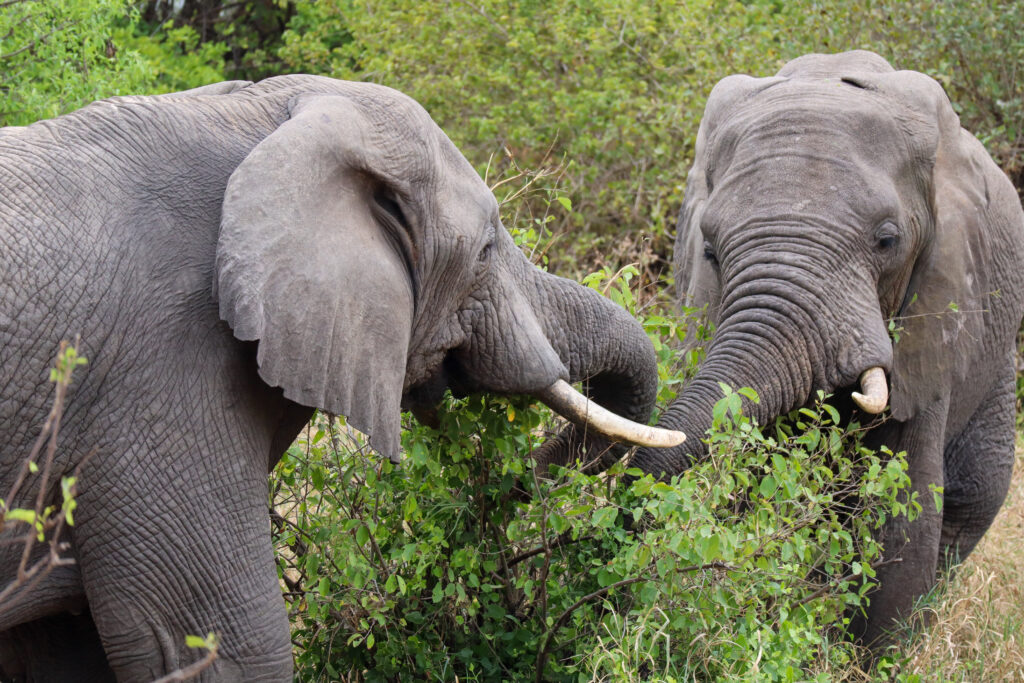
Going on a safari (this word comes from Swahili and means “trip”) means getting fully into the land of wild animals, watching them hunt, how they live in herds, how they eat, how they rest and how they act. You will delve into one of the chapters of the National Geographic documentaries, where instead of being on the sofa at home, you will be in the middle of the African savannah.

As it is one of the favorite destinations when going on a safari, this place in Tanzania is also becoming one of the most visited for tourists from around the world. Therefore, in this area you will find many tourism companies and many more people than in other parts of the African continent. Apart from that, the prices are high as the infrastructure of the parks as well as the price of the tickets are considerable. However, we think that if you have the opportunity you should do it. There are opportunities that happen only once in a lifetime; so, despite all the inconveniences you may find, we advise you to take a safari through these parks in Tanzania because it will surely be one of the most beautiful memories you will have of all your trips.
See leopards resting on a tree, herds of zebras and buffalo grazing on a stunning green and ocher plain, elephants walking as a family and using their horns to feed and drink water, cheetahs approaching silently on some impalas, the male lion on a rock, a crocodile camouflaged by the river, giraffes lengthening their necks to reach the tallest bushes, a pair of black rhinos with birds flying around them, hippos pulling out eyes of the water, fishermen manually removing their nets, lionesses taking care of their puppies, baobabs and acacias sheltering these animals, salt lakes full of flamingos, tribal groups and a wild and natural environment where inhabit the main mammals of the Earth is priceless. It’s an unforgettable and unique experience of seeing wild beauty with your own eyes and that we don’t want you to miss.
Therefore, with this article, we will try to explain what are the considerations that we think you should take into account when going on a safari in the Serengeti, Tarangire, Lake Manyara, Lake Eyasi, Lake Natron and the Ngorongoro crater. If you want to read our full itinerary, you can click here where you will find our story about our experience doing a safari in Tanzania.
The main places to visit. Where are they located?
In order to plan a safari in this part of Tanzania, it is very important to know where the different national parks, lakes and reserves in the area are located. On the map below, you can see the location of the different must-see places during your safari in Tanzania.
These are:
– SERENGETI: The Serengeti National Park, which in local language means endless plain, is one of the most impressive parks in all of Africa. With miles and miles of African savannah, there you can see a lot of lions, cheetahs, leopards, hippos, buffalo, elephants, giraffes, zebras, antelopes and rhinos (hard to see), among others. In addition, you can see one of the best spectacles of nature: the great migration of wildebeest and zebras crossing the Mara River towards the Masai Mara in search of better pastures. This park is one of the largest in Tanzania with an area of 14,763 square kilometers. The most visited part of the park is the area known as Seronera, accessible from the Naabi Hill Gate. To get there, you need to cross the Ngorongoro reserve by paying a transit fee and drive through Masai villages and some very beautiful lake. If you want to access from the other side (Klein’s Gate), you will have to cross different villages and communities located north of Lake Natron. The Serengeti is an essential park during your trip to Tanzania.
– NGORONGORO CRATER: Located in the reserve of the same name, this crater (which is actually a caldera) is one of the largest in the world and one of the most spectacular places to visit and enjoy a unique landscape. Located 90 kilometers south of the Serengeti, it is a space full of herds of buffalo, zebras, wildebeest, birds and also lions, leopards (harder to see), elephants and black rhinos that live in a privileged place in the middle of water and pastures and surrounded by mountains. The reserve (which goes beyond the crater) is inhabited by various Masai villages that previously inhabited the Serengeti but then, the government allocated to the Ngorongoro (about 50,000 people). For this reason, the Ngorongoro is not a national park. It is a reserve that is accessed from Karatu. The best activity to do inside the reserve is the descent by car to the Ngorongoro crater which, despite having a cost of 295$ per vehicle, will leave you amazed by the natural life and scenery that can be seen from below.
– LAKE MANYARA: At the gates of the village of Mto Wa Mbu, we find this national park of about 325 square kilometers which stands out for the presence of its alkaline lake. During the rainy season, the lake covers about 200 square kilometers, but disappears almost completely during the dry season. It stands out for its changing landscapes located under the mountains of the Rift Valley. In Lake Manyara we find more than ten different ecosystems and, during the rainy season, the shore of the lake is filled with flamingos. During the dry season, it is more difficult to see animals.
– TARANGIRE: With an area of approximately 2,850 square kilometers, this national park was a real surprise. Located southwest of Lake Manyara at a distance of about 60 kilometers, it is reached through the town of Minjingu. The Tarangire stands out for the large presence of baobabs and elephants that are found there, making it a very photographic park. Surrounded by the river Tara, it is one of the most accessible and economical parks in this area. We were lucky enough to see a couple of leopards, and to be blown away by the large presence of baobabs, one of the emblematic trees of Africa.

– LAKE EYASI: Lake Eyasi is a lake of alkaline and seasonal waters (in rainy season it is filled with water, while in the dry season it is completely empty) which is located west of the Ngorongoro reserve, about 50 kilometers from Karatu by a gravel road surrounded by onion plantations. In the lake coexists different tribal groups, such as nomadic fishing villages that fish following the following technique: the fishermen enter the lake with their canoes from where they throw their nets and return to land to stretch, once there and tied at the waist, nets for each end. Strengthening with the whole body, they retreat back until they can remove all the net with the fish caught. On Lake Eyasi you can also find other tribes such as the Hadzabe, a group of nomadic hunter-gatherers who have changed very little about their lifestyle about 10,000 years ago. There are currently just over 1,000 Hadza in Tanzania, a quarter of whom still live exclusively from hunting and nomadism. Finally, another group that can be found in Lake Eyasi are the Datoga, a tribe of about 3,000 people engaged in metal and jewelry work. They also have herds, and went to Lake Eyasi after being displaced by the Masai of the Ngorongoro reserve. A visit to Lake Eyasi is a very interesting activity to get to know and understand more closely and anthropologically different tribal groups that still keep their traditions alive. To find out more, you can click here.
– LAKE NATRON: Lake Natron is an endorheic salt lake located in the Great Rift Valley, near the Kenyan border and south of the Serengeti, only about 50 centimeters deep. It is located next to the Oldoinyo Leng’ay volcano (mountain of God), considered sacred by the Masai. The waters of Lake Natron are stained red by the proliferation of algae. It is one of the ideal places to see flamingos and then follow the visit to the Serengeti entering through the access to Klein’s Gate.
From where to start the safari. How to get there?
To visit the Serengeti National Park; the Ngorongoro crater; the parks of Lake Manyara, Lake Eyasi and Tarangire; or Lake Natron among others with an organized safari; the starting point is the city of Arusha.
Arusha is a city of approximately 500,000 inhabitants with more than 200 companies dedicated to tourism. Located under Mount Neru, it is one of the world safari capitals and from where most organized safaris you hire will begin and end. To get to Arusha, you can get there with:
- Flight. In Arusha we find a domestic airport from where most of the country’s domestic flights arrive. We arrived there with our flight from Zanzibar. Some of the companies that operate there are Coastal Aviation, Precision Air or Tropical Air. Anyway, about 60 kilometers from Arusha and located between Moshi and this city, we find Kilimanjaro International Airport where different international airlines like KLM, Qatar Airways, Ethiopian Airlines or Turkish Airlines fly. Most of the travel agencies that organize safaris in this part of Tanzania include transfer from the airport and come to pick you up or take you if you have to take a flight to your next destination.
- Bus. If you are in Tanzania, one way to get to Arusha is by bus. From Dar-es-Salaam there are different companies that make the daily journey to Arusha and vice versa. We recommend making the trip with the Kilimanjaro Express or Dar Express companies that are characterized by being one of the fastest and most efficient. The cost of the trip usually costs around 33,000 TSH per person. If you come from some other town like Tanga or Lushoto, there are other transport companies that make the journey to Arusha like Chakito, Mwambao or Al Raqeeb. If you are traveling from the neighboring town of Moshi, there are many options you can find to get to Arusha, the starting point of all organized safaris in this part of Tanzania.
If you go with your own vehicle, you can go directly to the national parks without having to visit the crowded city of Arusha. The main towns to enter the different parks are:
– Karatu: This village is the last one you will cross before entering the Ngorongoro reserve. Here you will find different accommodation options, petrol stations and supermarkets to buy food before accessing the Ngorongoro and the Serengeti National Park.
– Minjingu: This is the main town to access the north of Tarangire Park. If you come from Arusha, you will have to go through this village before entering one of the most amazing parks in Tanzania with its large presence of baobabs.
– Mto Wa Mbu: This town between Arusha and Karatu is the entry point to Lake Manyara National Park. It is a crossing point for many people doing the Tarangire safari to the Serengeti and there you will find different accommodation options, restaurants, supermarkets and petrol stations.
– Gorofan (also known as Gorofanni): This small town is located at the foot of Lake Eyasi. To get there, you have to take the turnoff that goes from Karatu to Eyasi (gravel road) in a journey of about 2 hours. From there, you can access to small nomadic fishing villages and different tribal groups that live near the lake.
– Loliondo: This small village is located north of Lake Natron and is the entry point for access to the Serengeti from Klein’s Gate, the gateway to the northeast of the park. It is a more isolated and remote place, in the middle of Masai villages and very close to the border with Kenya.
When is the best time to go on a safari in northern Tanzania?
When you ask the people of Tanzania they tell you that it is always a good time to visit the country and go on a safari, as we are in a tropical climate zone, where the temperatures are always pleasant and it is not very cold or very hot. For us, there are two seasons that would be the best to go on safari in this area of the country, which coincide with the two dry seasons:
The first dry season would be during the months of June to October, which usually coincides with the summer of Europe. These months are considered high season. From June to August, the animals migrate from the Serengeti to Kenya and there is not much rain. The animals are concentrated in water points, so it is easier to see them near a river, waterhole, lake… At the same time, when migrations return to Tanzania, from September to October, is a very good time to enjoy the crossing of the Mara River by many species, especially wildebeest and zebras.
The other dry season is from January to March, where it is highly recommended to go on a safari as it has rained in the previous months, and the whole landscape is very green and the animals graze everywhere.
These two dry seasons are the best but also the most requested. It is necessary to book in advance the organized safari or, if you do it for free, the places where you will stay to sleep, especially the accommodations that are inside the natural parks.
How many days do you need to go on a safari?
In Arusha, the city that is the starting point for most safaris, you will find plenty of options for a tour of the national parks and Ngorongoro Crater. If you go on an organized safari, many companies can make you a tailor-made dress with the proposal you want. However, it is important to consider certain aspects, such as the length of your safari and how many days you need.
The Serengeti National Park, one of the most imposing in all of Africa, is what will mainly mark the duration of your safari. This is the largest park and the one furthest from Arusha. You have two options to get there: crossing the Ngorongoro reserve and at a distance of about 240 kilometers from Arusha (with a journey of approximately 7-8 hours); or arriving by the northeast entrance of Klein’s Gate, crossing different villages and with a journey of more than a day to get there.
If you want to spend a whole day visiting the Serengeti National Park and come back, think that you will need at least 3 days to do your safari, where you will spend two of the days traveling by car. Also, as you will have to cross the Ngorongoro reservation the prices will not be much cheaper.
For this reason, we recommend that between the journey from Arusha to the Serengeti you can make a stop entering some of the most beautiful parks in the area such as the Tarangire, Lake Manyara or entering the Ngorongoro crater. Lake Eyasi is a little further from the main route between Arusha and the Serengeti.
Therefore, the days you need to go on a safari will depend a lot on your priorities and your budget. The most common options are:
– 4-day safari:
With 4 days, you can visit the Tarangire or Lake Manyara during the first day. On the second day you will make a trip to the Serengeti where you can enjoy a game drive in the afternoon. The next day you can enjoy a morning safari through the Serengeti and in the afternoon make a trip to sleep on top of the Ngorongoro. And finally, on the last day, go down to the crater early morning and return to Arusha.
In this case, you enjoy a full day in the Serengeti and take the opportunity to visit Lake Manyara or Tarangire, and descend to the crater of the Ngorongoro. You will cover many kilometers in a few days, but you will be able to enjoy the main emblematic places in the area.
– 5-day safari:
With 5 days you can do 1 day the Tarangire, 2 days the Serengeti, 1 day go down to the crater of the Ngorongoro (from noon, as in the morning you will make the route Serengeti – Ngorongoro) and the last day visit Lake Manyara. Lake Eyasi is further away from the circuit, and therefore more difficult to reach.
It is a very complete tour, and quieter than the 4 day safari. There are people who do not do Lake Manyara or Tarangire and concentrate everything equally in 5 days in a quieter way, taking the opportunity to visit for another morning the Serengeti and sleeping on top of the Ngorongoro to go down the next day early morning in the crater.
– 6-day safari:
This is what we did. The first day we visited the Tarangire, and slept at Mto Wa Mbu (at the gates of Lake Manyara). The second day we arrived at the Serengeti at noon and had time to do a game drive during the afternoon. The third day, we were all day inside the Serengeti. On the fourth day, we did a game drive during the morning in Serengeti and then went to sleep on top of the Ngorongoro crater. On the fifth day, we got off very early to go down inside the crater and went to sleep on Lake Eyasi. Finally, on the sixth day we visited some tribes near the lake and returned to Arusha.
With this option, you go down to the Ngorongoro crater, you are two full days in the Serengeti and you visit two of the other three national parks in the area (Tarangire, Lake Manyara and Lake Eyasi).
– 7-day safari:
With this 7-day safari, you can visit all the national parks and Ngorongoro Crater. You can visit Lake Manyara and Tarangire; enjoy 2 days in the Serengeti, descend to the Ngorongoro crater, and go to see the tribes of Lake Eyasi. You can also decide to visit Lake Natron, located under the sacred mountain of the Masai in the south of the Serengeti; and combine it with safari in the main parks of Tanzania.
It is a good option if you have the days to do it and this safari fits to your budget.
– 10-day safari:
In this case, you can thoroughly visit the Serengeti and approach the border area with Kenya to see the migration of animals crossing the Mara River. Between July and October it is a very good opportunity to get closer to the most inaccessible part of the Serengeti and see the great migration of wildebeest and zebras crossing to the Masai Mara in search of better pastures.
This is also one of the most expensive options for how many days you are in Tanzania’s national parks.
We were very happy with the 6 day safari because we were able to spend two full days in the Serengeti, be the first to descend into the Ngorongoro crater, enjoy the baobabs and elephants of the Tarangire and visit a more anthropological perspective knowing some of the tribal groups that they live near Lake Eyasi. At the very least, we recommend a 5-day safari so you can enjoy the trip without spending many hours a day travelling with the car.
Type of accommodation on a safari
One of the parts that needs to be decided when planning a safari is the type of accommodation where you will sleep during these days. Depending on the type of accommodation you choose, it will condition your journey and also the total price of the safari. It is always more expensive to sleep inside the park than on the outskirts, regardless of the category of your accommodation. The following types of accommodation you can find there are:
– Camping: There are different campsites inside the parks as well as on the outskirts. There are public campsites and private campsites. The former usually have a very basic infrastructure that consists of a plot where you can camp and set up your tent, as well as buildings where there are shower services, bathrooms and a cooking area. It is the cheapest accommodation. Camping fees, camping gear, tents and kitchen service must be paid if you decide to go on an organized tour. The second, private campsites, are located in more exclusive areas of the park and therefore the camping rate is higher. They usually have no infrastructure, no toilets or kitchen area.
– Lodges: All types of hotels are called lodges. They are found inside parks as well as on the outskirts. They are usually constructions of local architecture that integrate with the landscape. Many of them have all the comforts and have a swimming pool.
– Tented camp: They are fixed or mobile camps that are located inside the parks as well as on the outskirts. They have large canvas tents set up on wooden or, sometimes, cement structures. They have the advantage of being in prime locations in the African savannah with no architectural barriers that allow wildlife in the area to get closer to where you are. They have electricity normally supplied by generators or solar panels.
Fortunately, in Tanzania, there is a wide range of accommodation, suitable for different types of budgets and categories, which are classified by:
– Budget Category: the cheapest one. These are usually public campsites.
– Comfort Category: cheap but with certain amenities. These are usually mid-range lodges on the outskirts of the park or cheaper lodges inside.
– Standard Category: hotels or tented good quality camps within the parks.
– Luxury Category: hotels or tented luxury camps within the parks.
What do you need to bring for a safari?
Going on safari is not done every day. Whenever the time comes to prepare for luggage, there are some doubts about what to bring. Here are some tips that are always good when packing or backpacking when we go travel, and especially when we go on a safari, which is a very specific activity:
- Take only the necessary in your backpack: We tend to put everything in our suitcases, although we can usually save them “just in case”. We must keep in mind that the backpack or suitcase we take is preferably made of fabric/canvas, which is not rigid, as in safaris there is not much space inside the car and luggage is usually placed on top of the vehicle to save space.
- Take very diverse clothes: In Tanzania temperatures change a lot during the day. It is usually cool in the mornings and evenings, while at noon it is usually very hot. Long pants in the morning/evening, along with long-sleeved T-shirts/shirts will protect you from the cold as well as from mosquitoes. It is important to wear light and comfortable clothes, with which you feel comfortable and can make many types of movements. At the same time, keep in mind that dark colors, such as navy blue, attract insects, especially the tsetse fly that is active during the day. It is advisable to wear natural colors such as: dark green, khaki, brown, beige…
- Highly recommended to wear sunglasses, a hat or headscarf, sunscreen and lip balm.
- In Tanzania it is not welcome for people to wear military clothing. So to avoid possible problems with the police, you better leave these clothes at home.
- Include a raincoat inside your backpack. It often rains unexpectedly and suddenly, so having a raincoat on hand can be helpful in not ending up wet like a duck. It also goes well as wind protection in the early hours of the morning or evening.
- Bring good binoculars and/or a good camera. They will help you to see the animals you find much better, which you sometimes do not find on the side of the road. If you like photography, keep in mind that it is good to have a telephoto lens of about 300, with extra spare batteries, a good cleaning kit for the material because there is a lot of dust, enough memory cards and some filters that also protect the telephoto lens.
- Travel with a good health insurance. We recommend that you hire Chapka Insurances, a company that offers tailor-made packs for your trip. If you click here, you will get a 7% discount.
Safety rules during a safari
If you travel in the main national parks of Tanzania with a organized safari, you will feel quite safe. Drivers have a lot of experience driving on different types of roads, they know the terrain well and know how far they can get when it comes to seeing animals. In addition, safari cars are usually high, with a pop-up roof and very well prepared.
Anyway, whether you are traveling with your own vehicle or with an organized tour, here are some of the most important safety rules you must follow to fully enjoy your safari. These are common sense things but we sometimes forget about them. These are:
- Do not feed the animals. Under no circumstances should you feed animals, even birds or monkeys. Feeding them can cause them to adapt to an inadequate diet and get more violent towards humans. They are in the African savannah and have their own means and resources to feed themselves.
- Do not get out of the car or stick your head out the window. Think that you are in the wild and that animals can be closer than you think. Safari cars usually have pop-up roof where you can stand and observe all the animals better, but don’t think about getting out of the car to take a better picture of the lion, for example. Sometimes, you’ll also drive on bushy paths, so avoid having unnecessary accidents by pulling your arm out the window. In national parks, there are certain protected picnic areas where you will be allowed to get out of the vehicle and even go to the toilet.
- Don’t make a lot of noise and stay quiet. Think that if animals hear noises, they often disappear. They are in their habitat and we must respect them. Don’t put on music or make gestures to make them move, then because of you you can make others not enjoy the safari. Besides, any noise can scare the animal causing it to try to defend and endanger your integrity.
- In the Serengeti, it is forbidden to fly drones. This practice is becoming very fashionable in recent years, but in this African savannah it is totally forbidden unless you have a special permit such as for the recording of documentaries.
- As you approach the animals, keep the windows up for safety. You never know how that animal will react, so you better make sure it won’t be able to get in anywhere. Don’t rely on picnic areas either because monkeys sometimes show up that even if you have the window open a finger, they try to get into to steal your food.
- If you drive yourself, don’t go off from the main routes. At the entrance to the park you will be given directions on the routes to follow and many of them are marked with signs. Do not deviate from the road because often the animals are resting under the bushes or camouflaged in the middle of the grass.
- There are times when you will have to put the reducer on your vehicle. Especially when climbing the Ngorongoro crater, your vehicle will need a lot of power to be able to face any sudden stop. Check the pressure of your tires and the terrain, and if necessary ask the drivers of the organized safaris who have a lot of experience.
- Respect speed limits and drive slowly. You are inside different national parks where many wild animals live. Go slowly; in this way it will be easy for you to see more animals and not scare them.
- Never leave the place where you are staying at night. If you sleep in national parks, you are likely to see zebras, hyenas, or elephants feeding within a few feet of where you are. Obviously, it is forbidden to drive at night in national parks.
- Scrupulously follow the schedules of your entry. Tickets to the parks usually last 24 hours. If you enter the Serengeti at 2pm and buy a one-day ticket, you can be there until 2pm the next day. Do not extend your stay illegally because you could face a considerable fine.
How much does it cost to go on a safari?
Going on a safari in this part of Tanzania is not cheap. Tickets to the parks are expensive and so are the accommodations. However, you are in a unique place in the world where there is one of the largest concentrations of animals in Africa.
To go on a safari, you have to take into account the price of the tickets as well as the price you have to pay per vehicle. In addition, accommodation within the park has a set price and, in addition, you will have to add the gasoil of your vehicle and everything you need to bring food and drink during your safari. Here are the prices of the different national parks, as well as the cost of the vehicle to be paid to enter and other costs:
First, in this list you will see the prices of the main national parks that are updated in the summer of 2021. As for Lake Eyasi, no entry is required; while on Lake Natron you have to pay small fees to the communities of villages you will cross by vehicle.
Second, the prices of public campsites in different national parks are 35$ per person per night, VAT included. They do not include any meals. We were at the Nyani Campsite within the Serengeti and the Simba Campsite within the Ngorongoro reserve. In Tarangire, there is also a campsite located in the park that has the same price.
Third, prices per vehicle depend on whether they are Tanzanian registration or foreign registration. Please find attached a table taken from the Tanzania National Parks where you can see the amount to be paid per vehicle and day. VAT of 18% must be added. As you can see, traveling with Tanzanian license plates is much cheaper than traveling with foreign license plates (20,000 TSH is about $ 9).
Last but not least, for all those who want to go down to the Ngorongoro crater you have to pay a fee of 295$ per vehicle, regardless of whether your car is registered in Tanzania or another country.
With these numbers, we can do a rough calculation and see that to do a 2 person safari for 5 days with your own foreign numbered vehicle, the cost would be around 770.90$. This total is from 383.4$ (4 days x 82.60$ from the Serengeti and Ngorongoro; and 53$ from Tarangire); plus 147.5$ per person to descend to the Ngorongoro; plus 140$ for 4 nights of camping per person within national parks; plus 100$ per person to access national parks for 5 days with your vehicle. And, we must keep in mind that here still need to include other costs such as meals, drinks and gasoline.
It is for this reason, that we decided to take an organized safari. In the following link, you can read more about our experience with the Oltumure Tours&Safaris team and our 6-day safari.
When planning an organized safari, you go with a guide-driver and a cook. They both need to pay a ticket to enter the parks as well as the accommodation where they will sleep (safari rates already include guide and cook tickets, as well as his accommodation).
You can decide if you want to travel with a private safari (the whole car for your group), or with a shared safari. Usually, the shared safari is better priced although sometimes they are complicated because they are groups of 6-8 people, with different preferences and often difficult to manage (time to get up in the morning, meals, time to see an animal…) . We initially asked for a shared safari but as there was no availability, we negotiated a private safari for two people.
Also note that prices may vary depending on the type of accommodation you prefer. There are accommodations that are outside the national parks and public campsites that are also cheaper. In our case, we always slept with tent and budget category.
On Internet, you will find different rate options. Here you have a link where you can compare different safari options. From what we saw, prices for 5-day safaris cost around 1,300$ per person and budget category; while the 6-day ones cost around 1,600$ per person with budget category (sleeping in public campsites). With this price, everything is included (meals, tickets, trips, visits to tribal groups, water, medical insurance, fees …) except for personal purchases you decide to make and tips for the driver-guide and the cook. We were advised that the tips were 15$ per day for the driver-guide and 10$ per day for the cook.
As we have mentioned, there is a wide range of companies that offer safaris in Tanzania and can prepare the trip you want. You can always talk to them and negotiate. We recommend that you contact:
– Oltumure Tours&Safaris: This is the company we did our safari with. From the very beginning, Robert, its manager, was very receptive and answered all the doubts we already had. He even suggested us to have a video call so he could explain us the types of safaris and see which one suited us best. We had a spectacular safari with them and their team: Abraham -Mr. Delicious- as a cook, Edgar as a training guide student and Hassan as a driver-guide. If you can, ask to have Hassan with you. He is a lovely person and a great professional: he knows how to find any animal you want in the African savannah. In the Ngorongoro crater he was the first to visualize two black rhinos and alerted all his companions by radio. We were able to enjoy these animals alone, and when we left, everyone came with their cars quickly to see them. Besides, he is very friendly, very close and kind person. With Oltumure Tours&Safaris, they will offer you a tailor-made safari with one of the best prices you can find on the market. Great value and great team! You can check their website here, and talk directly to Robert on his phone which is +255 789 477 066.
– Face of Africa: During our safari, we met a couple who were with this company and who also spoke very well about their team and infrastructure. You can contact his manager, Hamadi, who has rooms in Arusha to receive guests who go on safaris with his company. You can check their website here, and talk directly to him on his phone which is +255 784 162 038.
– Sensation of Africa: This company has very good references when it comes to going on a safari in Tanzania. Of very good quality, its owner, John, is between Girona and Tanzania organizing different tailor-made safaris for all types of budgets. You can check their website here, and talk directly to him on his phone which is +34 685 45 23 70.
– Huellas Nómadas: This Spanish company offers organized routes to different places in Africa, including Tanzania. During our safari, we met a group of Spaniards who were very happy with this company and who traveled with them visiting Lake Natron, the Serengeti, the Ngorongoro and Lake Eyasi; among others. Another option if you want to travel with a group and from Spain with everything already organized. You can view the web directly here.
How do you choose the safari option that suits you best?
In Tanzania you will find a wide range of safaris. Think that in Arusha there are more than 200 companies engaged in tourism; therefore, the supply is unattainable. Knowing which is your best option is very complicated, but here are some tips for you to think about the kind of safari you want to enjoy a very complete trip to this part of Tanzania:
- With group or private: You have the option of doing group safaris or private safaris. If you are traveling alone, we recommend that you look for an option to do joint safaris because it will be much cheaper, apart from the fact that you will be able to share your experience with other people. If you are two or three and also want to lower the cost, you can also look to share the safari. However, if you don’t want to depend on other people and you don’t know if you will share the same concerns (time to see an animal, time to get up in the morning, etc…); you can also hire a private safari where you will have all the car and safari team at your disposal.
- Organized or by your own: If you want, you can do the safari by your own with your vehicle or with a rental vehicle (it must be 4×4). In this case, prices are also high as tickets and accommodation within national parks are expensive. However, you can have a great adventure as an explorer and looking for animals for yourself. You have to be careful because you won’t have the knowledge that local guides or drivers have, and you may not get a chance to see many of the animals you can see on an organized safari. This is more expensive than going for free; but instead, you make sure everything is ready, that you have all the meals covered, and that all you have to do is sit back, relax, and enjoy the spectacle in front of your eyes.
- Days and parks to visit: You have to think about how many days you want to stay (the more days, the higher the final budget will be) and what parks you want to visit. The Serengeti and Ngorongoro Crater are the most expensive and most visited; but going there is well worth it. We also recommend you to do the Tarangire because we were very surprised. Seeing the large number of baobabs makes it unique compared to everything else. Lake Natron, Lake Eyasi and Lake Manyara are perhaps the ones with the lowest concentration of animals; although during your visit you will be able to know different communities and their way of life. Our advice is to make a budget and see how much you want and how much you can spend; and then, based on that, choose your own route.
- Camping or lodges: As we mentioned, during your safari you have different accommodation options depending on your type of budget. We traveled with the budget category, the cheapest, sleeping in tents, sleeping bags and mattresses. Although it was cool in the evenings, we slept very well. If you want places with more amenities, such as a bed or a hotel, you can also find it; but then your budget will become more expensive.
- Book in advance or look for a safari from Arusha: We booked our safari from Catalonia, two weeks before we did it. After searching and talking to several companies, we decided on Oltumure Tours&Safaris. Yes, it is true that we booked it with very few time, but it is also true that we went there at a time when there were not so many tourists due to the coronavirus pandemic. You can look for your own safari companies in this area and then organize yourself for free the rest of the trip (such as flying to Zanzibar -you can read our article here– or visit the Usambara Mountains -you can see our experience here-); you can book a safari from home with everything already organized and where you only have to take care of the return plane tickets (in this case, you will have to contact companies in your country of origin); or there is the less common option of booking the safari directly from Arusha. In this case, you can find last minute deals although you may need to be in the city for a few days to be able to plan the dates, negotiate budgets and see if there are spaces available that fit into your safari idea. Therefore, in this case, we recommend that you prepare it and book it in advance.
Our safari route
We, at first, considered the option of making a safari through this area by our own with our vehicle. But after studying all the costs involved and with the last minute change due to the delay in the arrival of our car in Mombasa, we flew to Tanzania with the idea of traveling for the first month with transportat public and go on a safari with a Tanzanian company in this spectacular area of East Africa.
For this reason, we chose the option of doing a 6-day safari with Robert from the company Oltumure Tours&Safaris and his entire team. Below we will summarize our 6-day itinerary but if you want to know more, you can click here to read more about our experience with this safari.
DAY 1: We arrived at Arusha airport around 9am with a flight from Zanzibar. There we meet Robert, manager of Oltumure Tours&Safaris; Hassan, our driver-guide during these days; and Edgar, a training guide student who will accompany us throughout the safari. We loaded our luggage into our safari car and after an explanation of all the day’s programming, we headed to Tarangire National Park. We get there around noon and enter the park which quickly surprises us by the large presence of baobabs. We have a picnic in the car as we watch a large herd of elephants hydrating by the river, and in the afternoon we continue our game drive with the good fortune of seeing two leopards and many more elephants surrounded by acacias and baobabs. In the evening, we arrive at Mto Wa Mbu where Abraham, our cook, is waiting for us for cooking all the meals during these days. We sleep at the Fanaka Campsite after a beautiful first day in one of the most amazing parks in this part of Tanzania.
DAY 2: In the morning, after a good breakfast in our accommodation, we continue our route to the Serengeti crossing the mountains of the Rift Valley and enjoying a good view of Lake Manyara from the altitudes. We cross Karatu, the last village before reaching the entrance of the Ngorongoro reserve. Once our team has paid all the corresponding fees, we move on through the lush green landscape and clay soil and stop at a viewpoint where we contemplate the immensity of the Ngorongoro crater. We follow a route along a very beautiful gravel road that passes between small Masai villages, shepherds with their herds, a large lake of water and a landscape that goes from the mountainous green to the immensity of the plain of the African savannah. We are already approaching the Serengeti where we arrive around 2pm. We have lunch and go in for a first game drive in the afternoon, where we visualize our first lions and lionesses, hippos, elephants and many antelopes before going to sleep at our public campsite which is the Nyani Campsite, located inside the park of the Serengeti.
DAY 3: Today we will enjoy the Serengeti National Park all day. In the morning, we see a large number of lions in different areas of the Seronera area: a family of lions resting, a male lion on the top of a rock, a lioness walking around our path while looking for her children… We go also in search of leopards in the African savannah, and finally we contemplate a camouflaged and solitary cheetah among the tall grasses of the immensity of the “endless plain”. We dine under the shade of an acacia tree and in the afternoon we follow our route watching giraffes, zebras, hyenas and antelopes as we return to the campsite to rest.
DAY 4: In the morning, we load our luggage for a route along the Serengeti River and near the mountains. Just leave our campsite and we can already observe the first lions! Along the way we also see hippos, elephants, a family of lionesses with their male lion resting by the river, a leopard on a tree branch, large herds of buffalo and zebras and a small lake with flamingos. We are still traveling towards the exit of the Serengeti park when, right next to the road, we come across a cheetah crossing right in front of us to go hunting for some impalas. Unfortunately for him, his prey senses his presence and escape quickly before the cheetah can hunt them down. After this last big surprise, we leave the Serengeti Park where we will have lunch at the entrance and continue along the same path until we reach our accommodation located at the top of the Ngorongoro crater: the Simba Campsite. We have dinner and before going to bed, we observe zebras, hyenas and elephants that are very close to our camping. The next day we will have to get up very early to go down to the Ngorongoro crater, one of the best experiences you can have in Tanzania.
DAY 5: Today is the day we get up the most. At 5 in the morning we are already having breakfast to be one of the first to go down to the crater and see how the day wakes up from one of the most impressive calderas on Earth. It is spectacular to see the large number of animals that are concentrated in an area of 20 kilometers in diameter. We see large herds of zebras, buffaloes, and antelopes; birds like the grey crowned crane, the national bird of Uganda; hippos on the shores of a lake; hyenas; and a pair of lions copulating in the middle of their honeymoon; among others. Being able to walk inside the paths of the Ngorongoro crater while observing all its immensity and how the animals coexist inside is a unique experience. Just before leaving, Hassan, our guide-driver, finds two black rhinos walking among buffaloes and zebras. One last big surprise before climbing the crater again and saying goodbye to the Ngorongoro Reserve, a unique place in the world. We drive towards Lake Eyasi where we will go to see the sunset next to a village of nomadic fishermen who enter with their canoes to throw the nets and then, once on land, collect them by pulling the net to catch the fish. We sleep in a campsite located in the village of Gorofan.
DAY 6: We get up before sunrise to visit, with a local guide who speaks their language, the Hadzabe tribe, a nomadic hunter-gatherer tribe that lives around Lake Eyasi. It is a community that speaks with the language of the clicks and is destined to disappear as fewer and fewer members maintain the modus vivendi of their ancestors. We go hunting birds with bows and arrows with a group of young Hadzabe, who hunt a few of them and then, once they have cooked in the fire, they are eaten. We also see the area where they live, which is changing in search of new animals and exchanges with other tribal groups. We also visit the Datoga tribe, more numerous than the previous ones and who work metal and jewelry. We observe how the women, adorned with bracelets and earrings, mold the grain of corn while the men, with the fire, make the tip of the arrows to exchange it with the Hadzabe in exchange for medicinal plants. A great experience that surprises us positively, because when doing this activity we were quite scared by the “touristy thing” we might find. In the afternoon, we make our way back and arrive in Arusha after 6pm of these intense and unique days in one of the most spectacular places on Earth.
We know that a safari in Tanzania is an expensive activity for the money spent in a few days, but for us, the experience was very rewarding. Not only do you delve into the life of wildlife, but you also enjoy spectacular scenery with the Ngorongoro crater and reserve, the Tarangire baobabs, the sunsets on Lake Eyasi and the immensity of the plain of the African Serengeti savannah. A unique place on our planet that will surely not leave you indifferent!


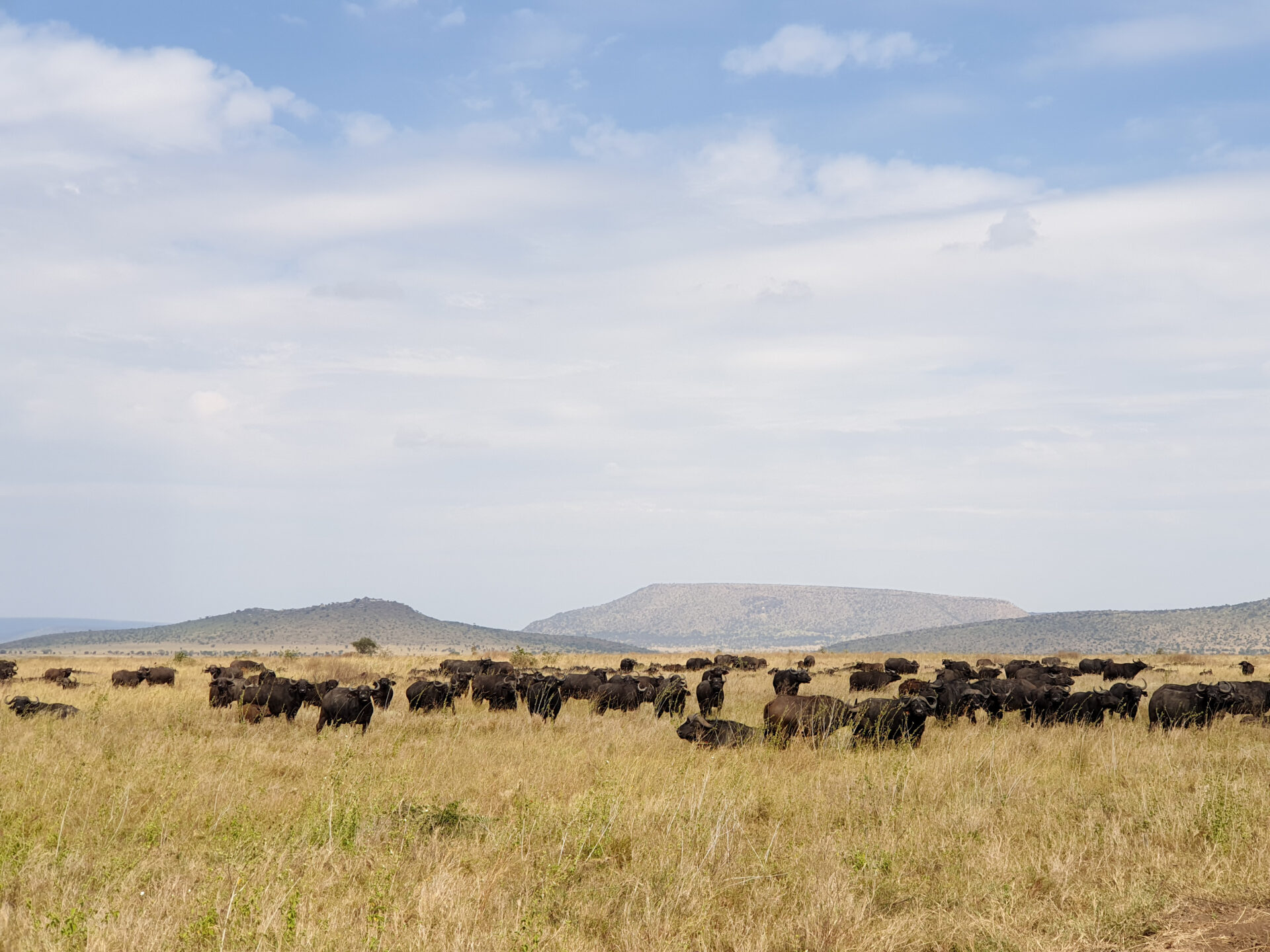
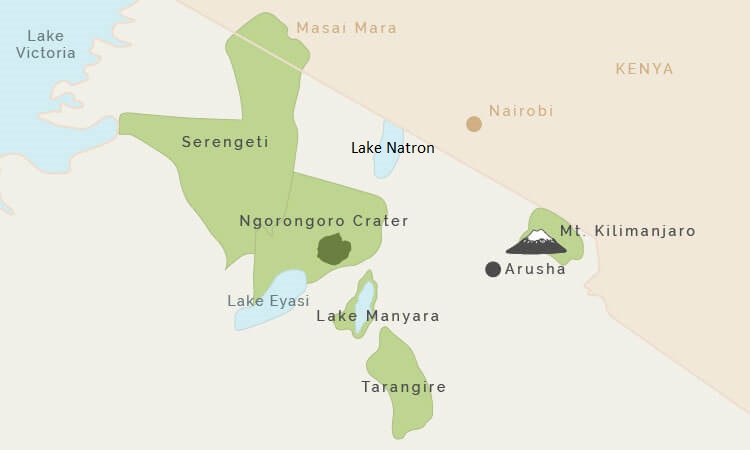

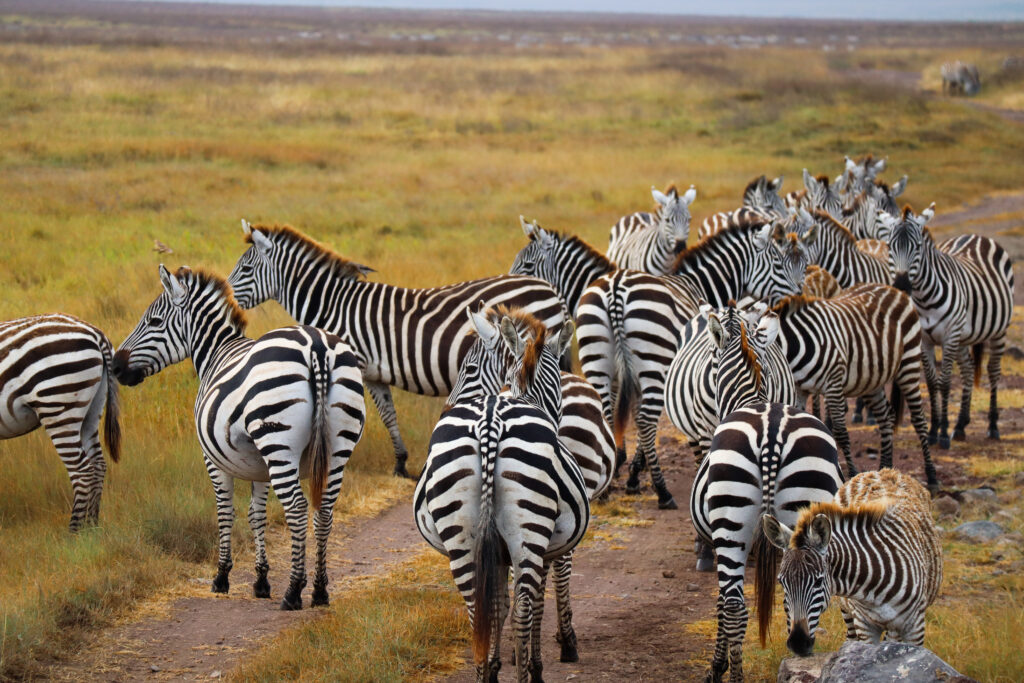


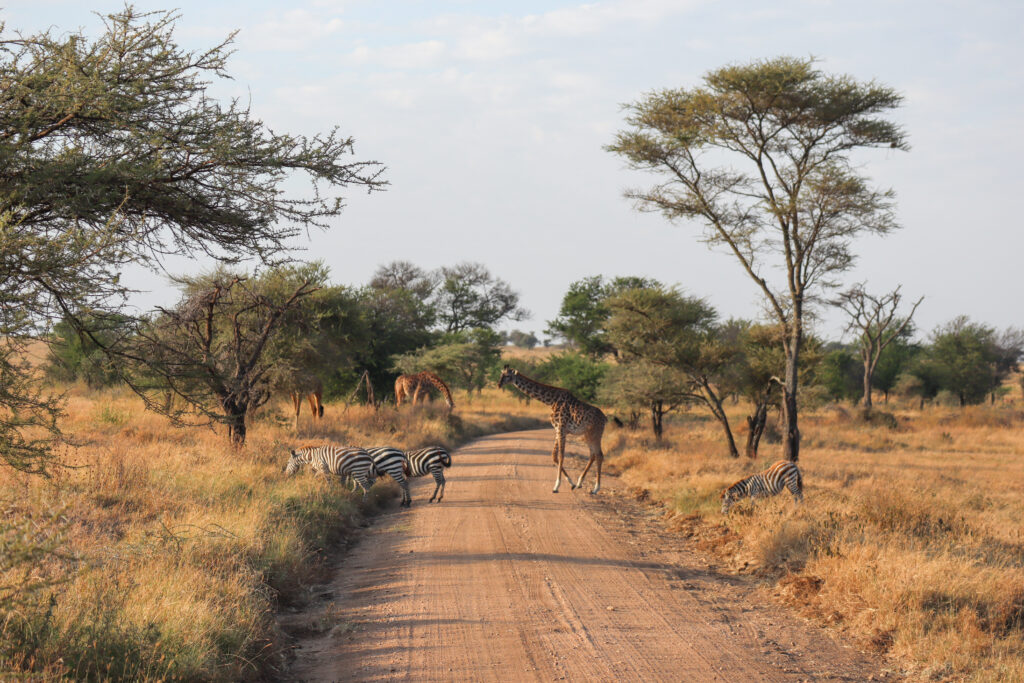
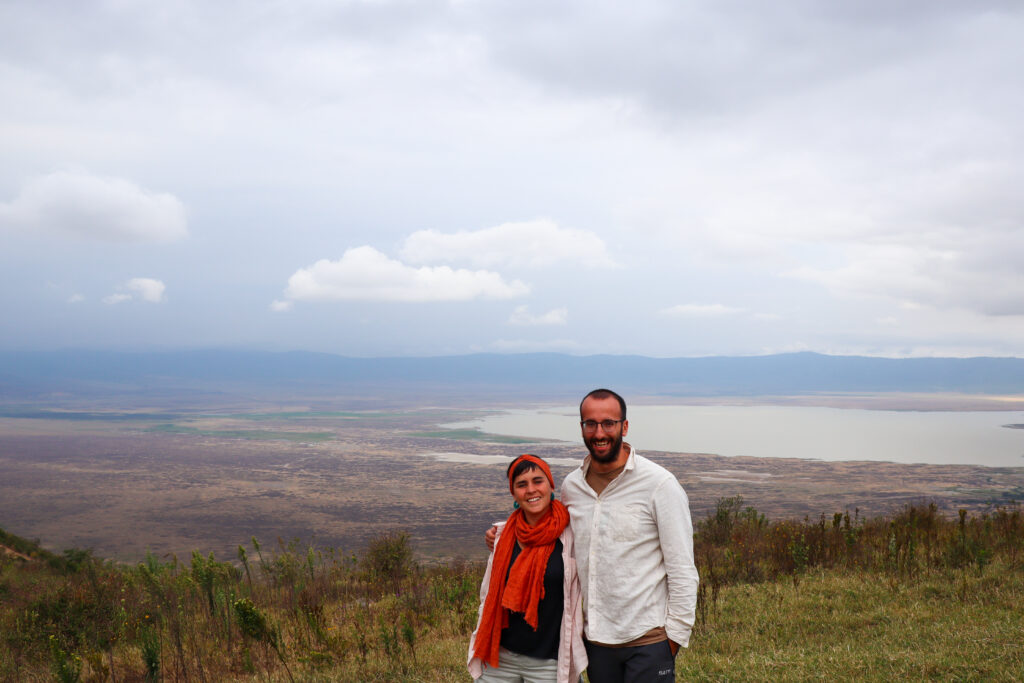
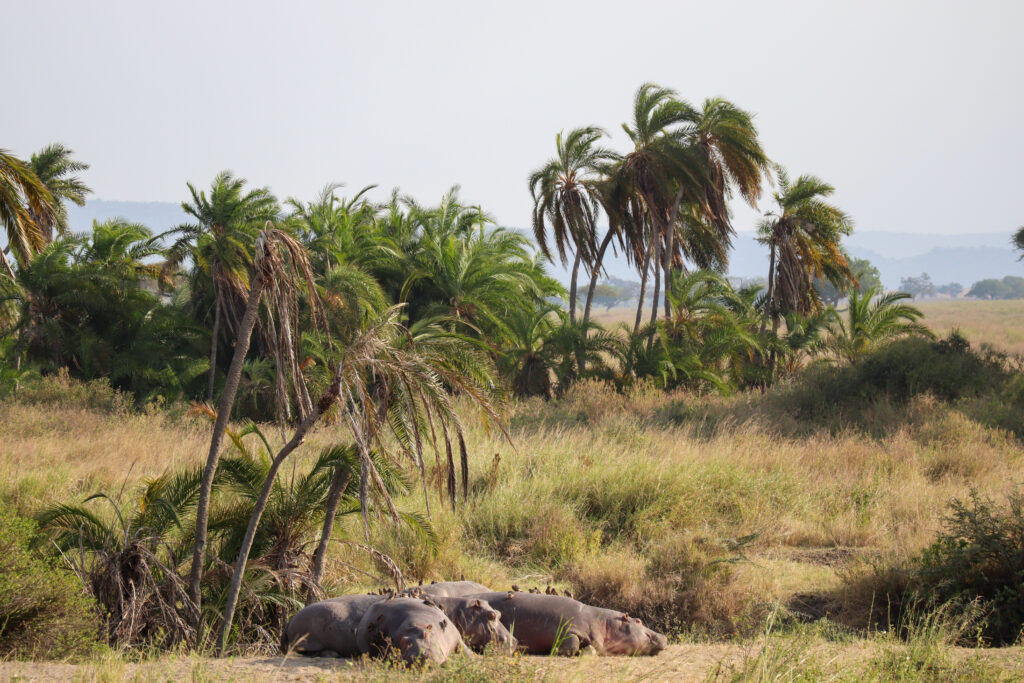
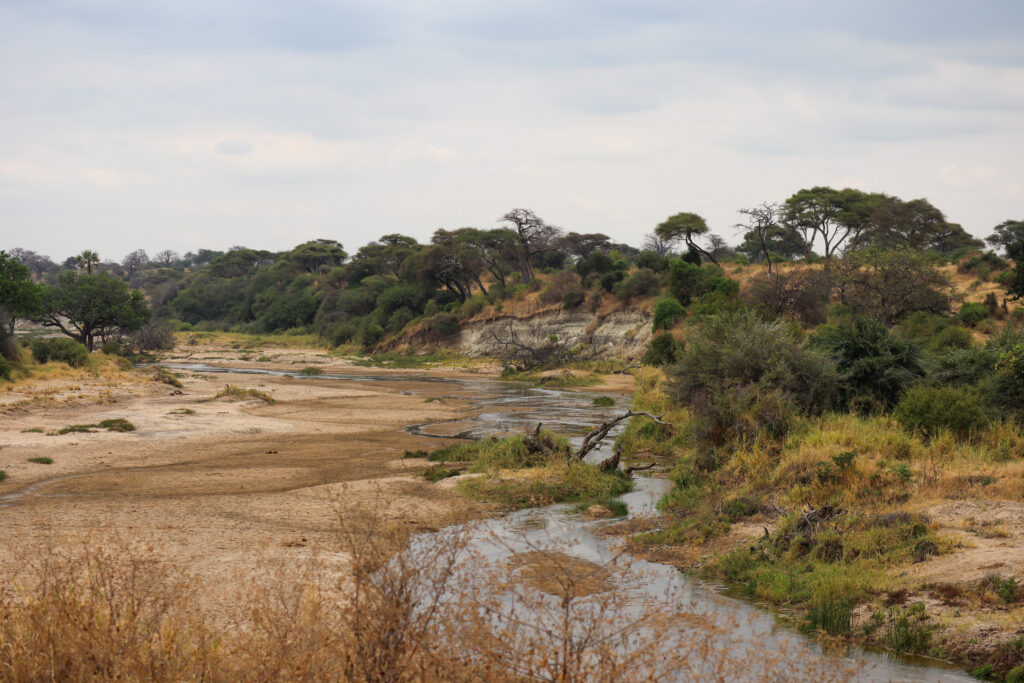
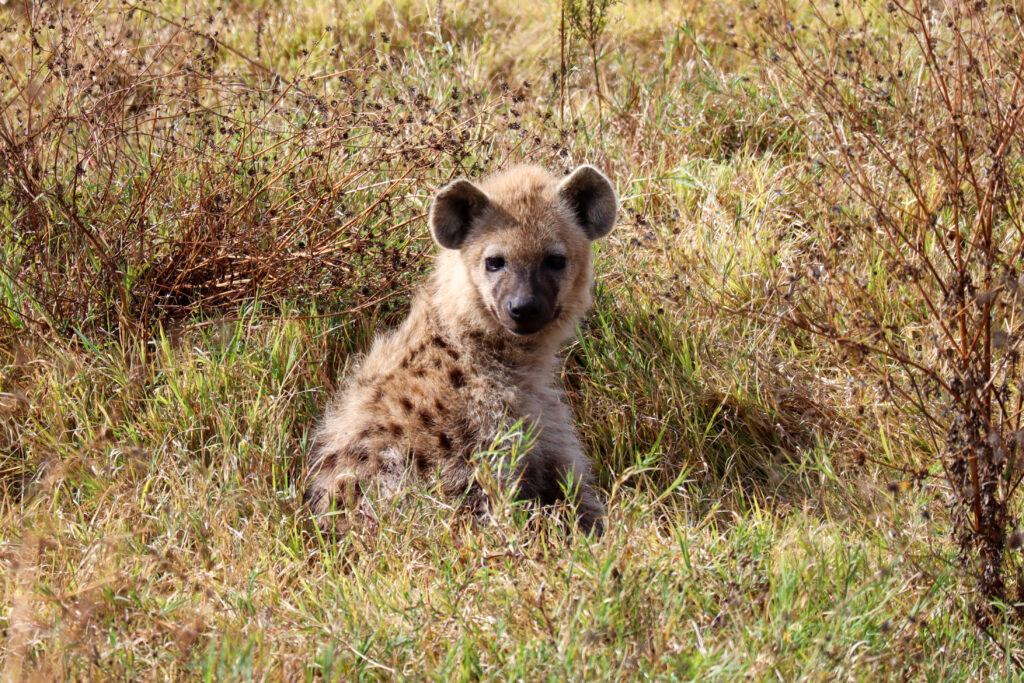

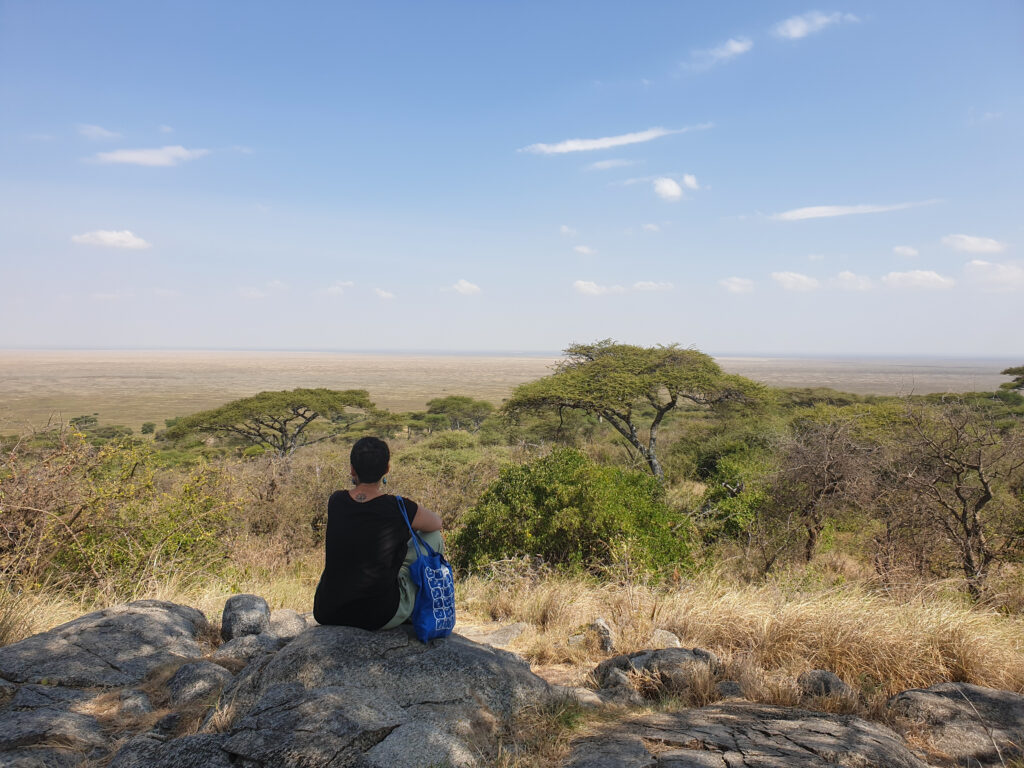

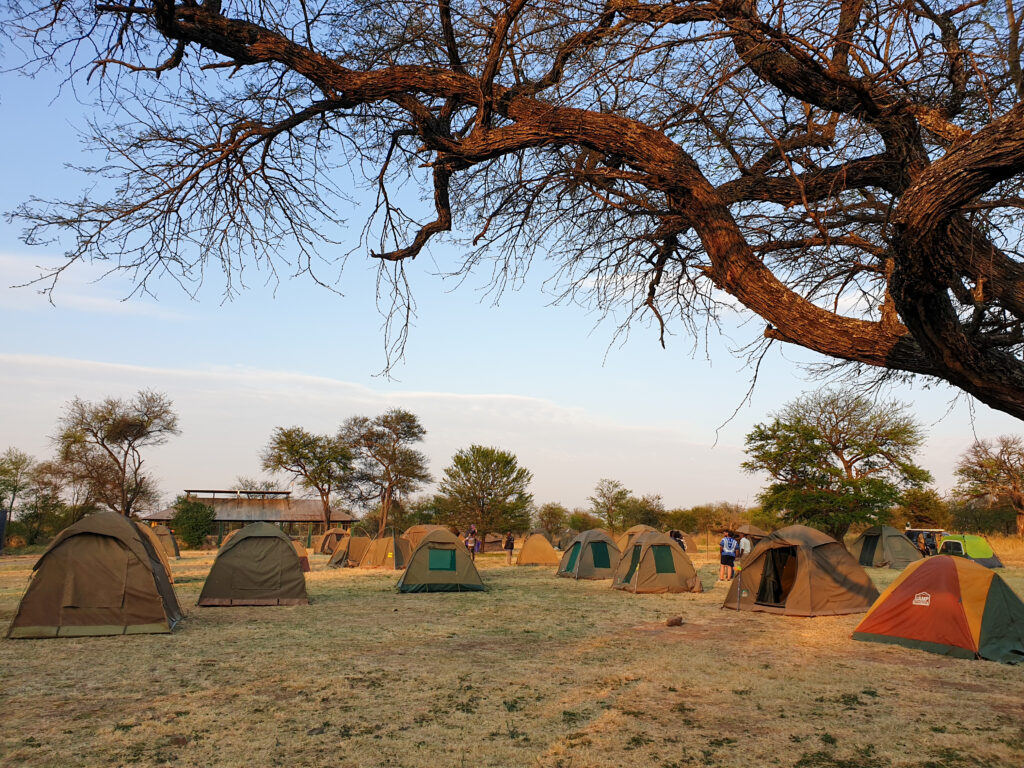
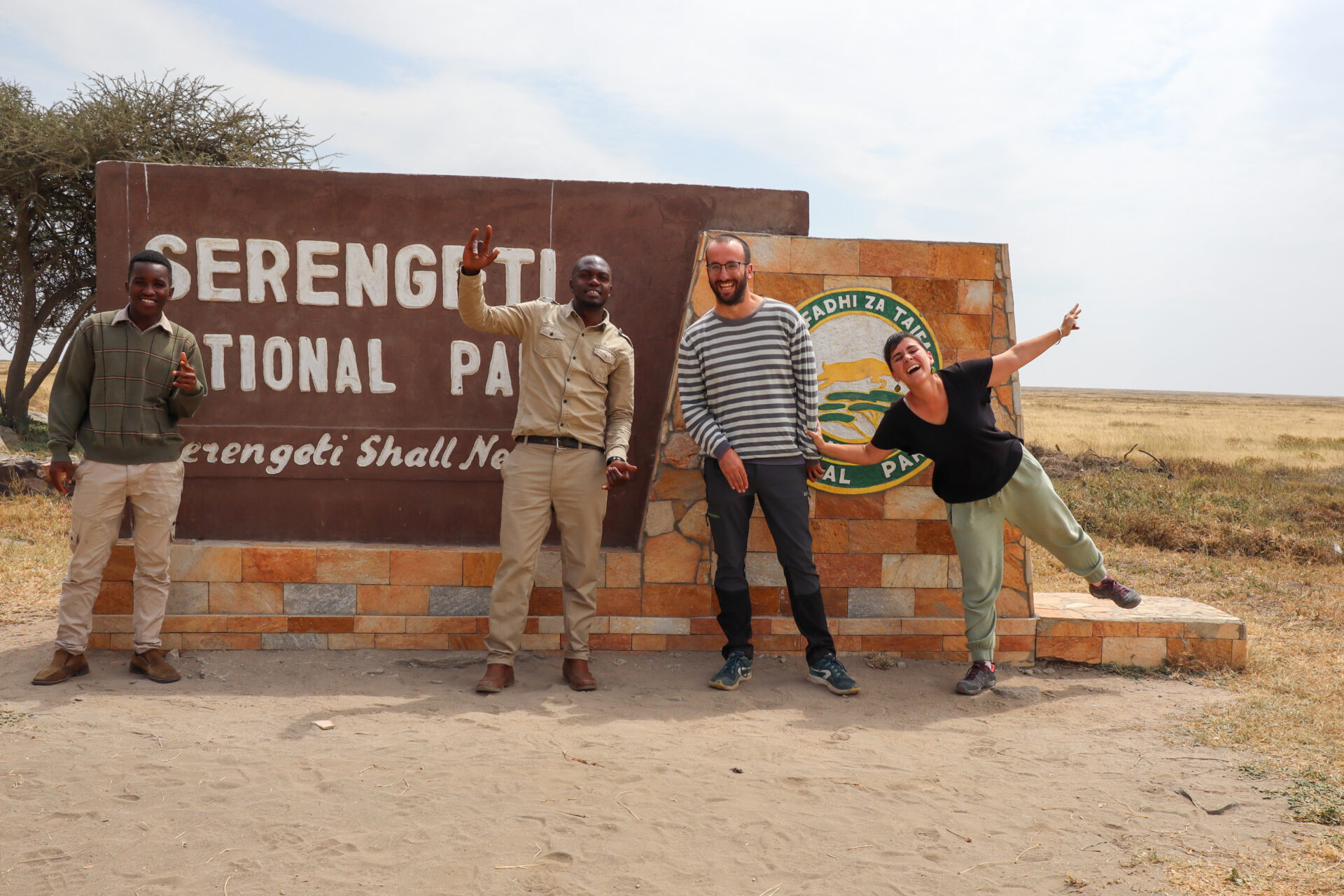
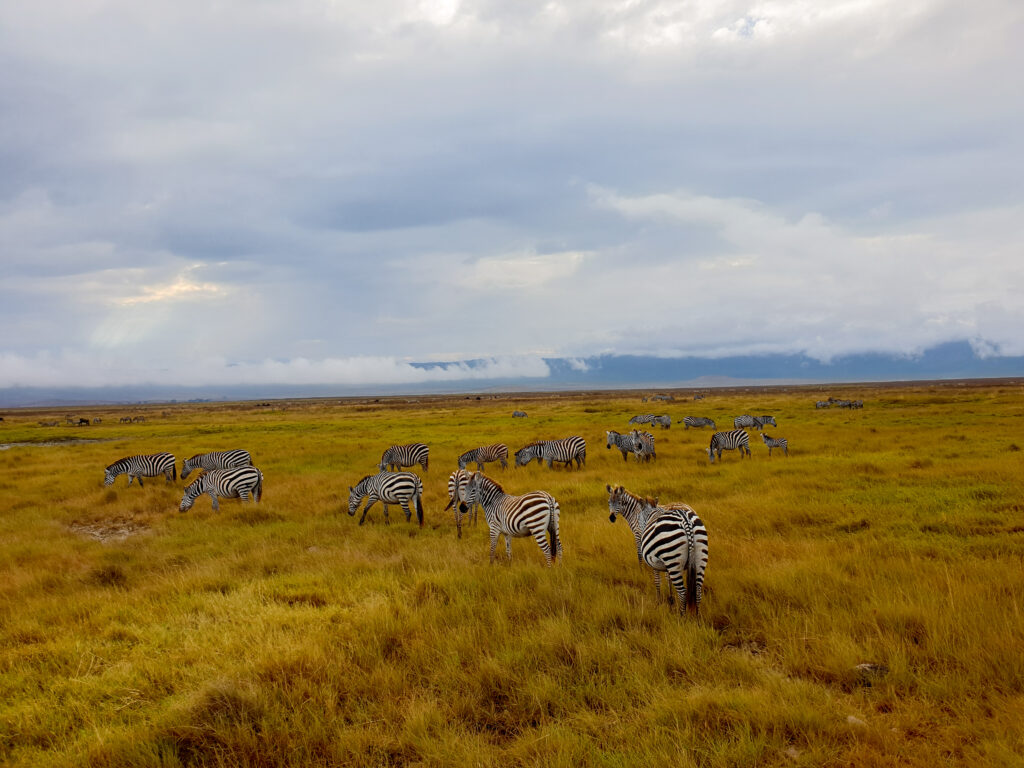
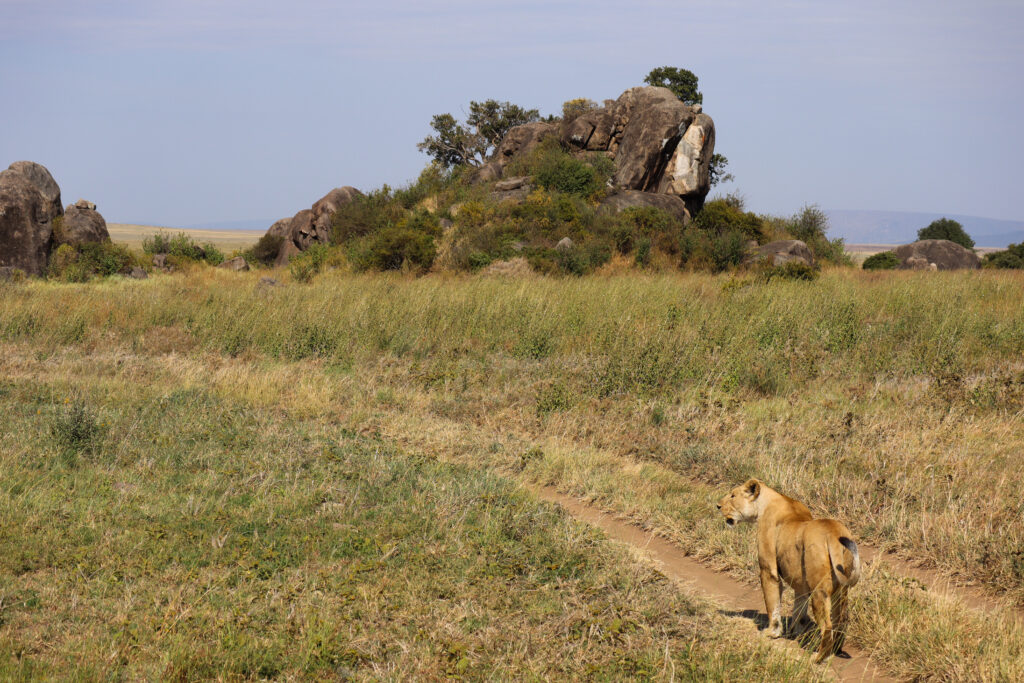

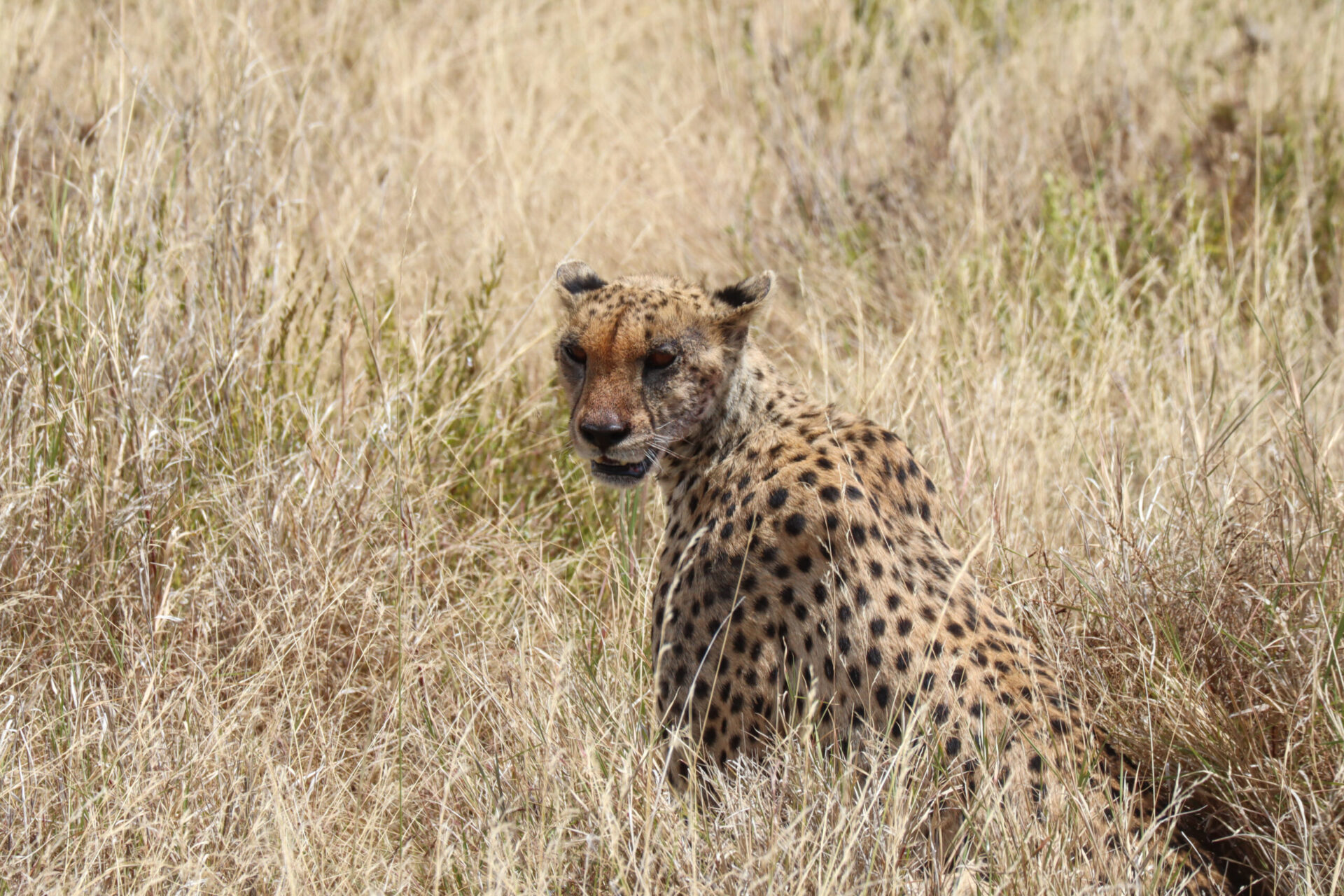


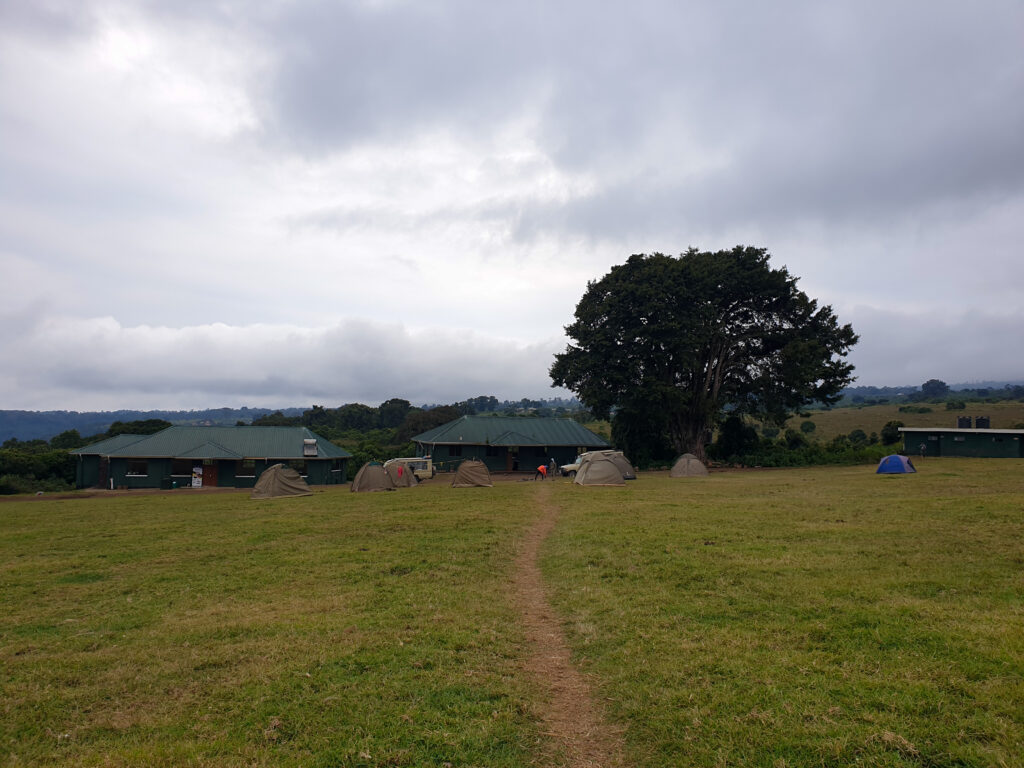
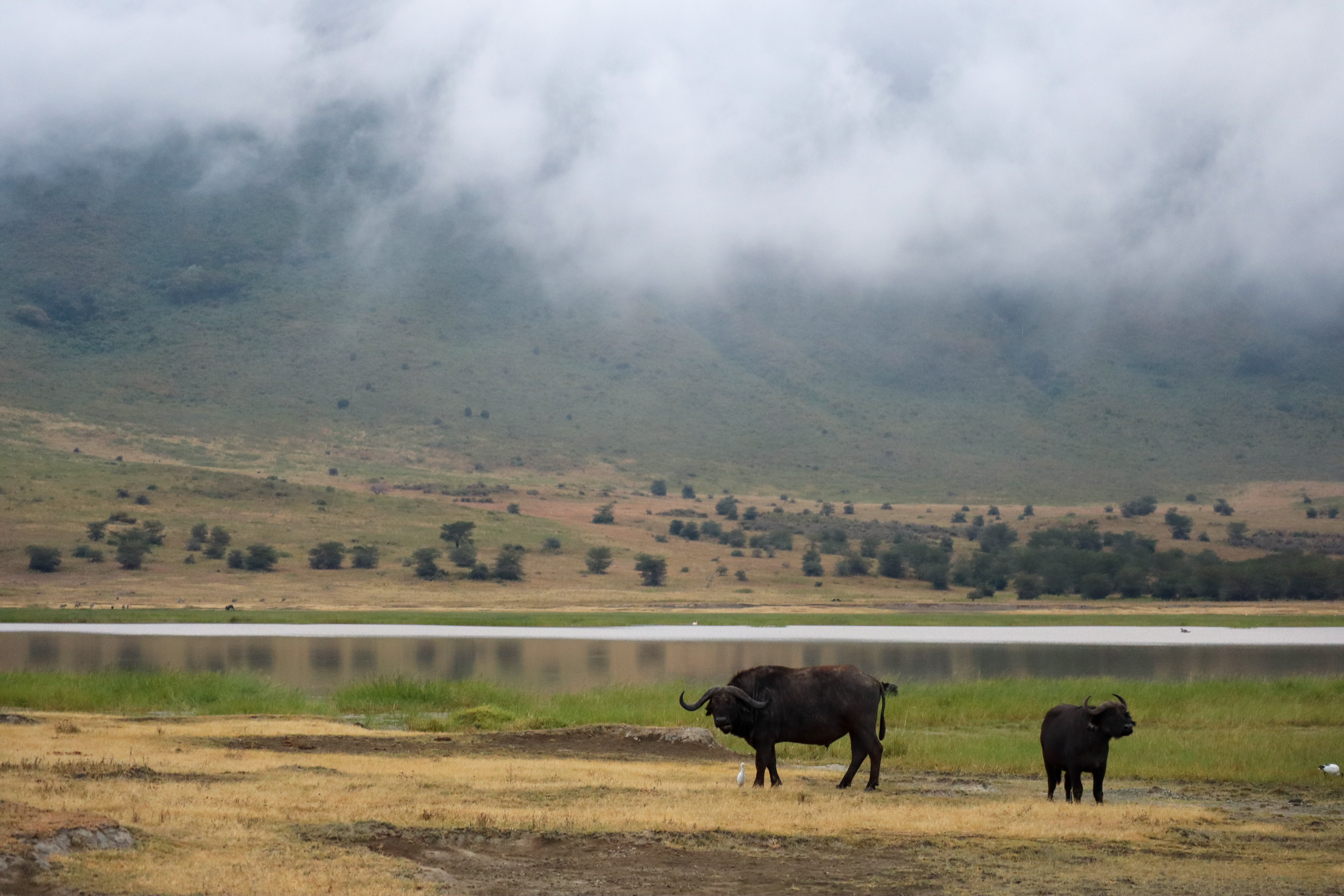


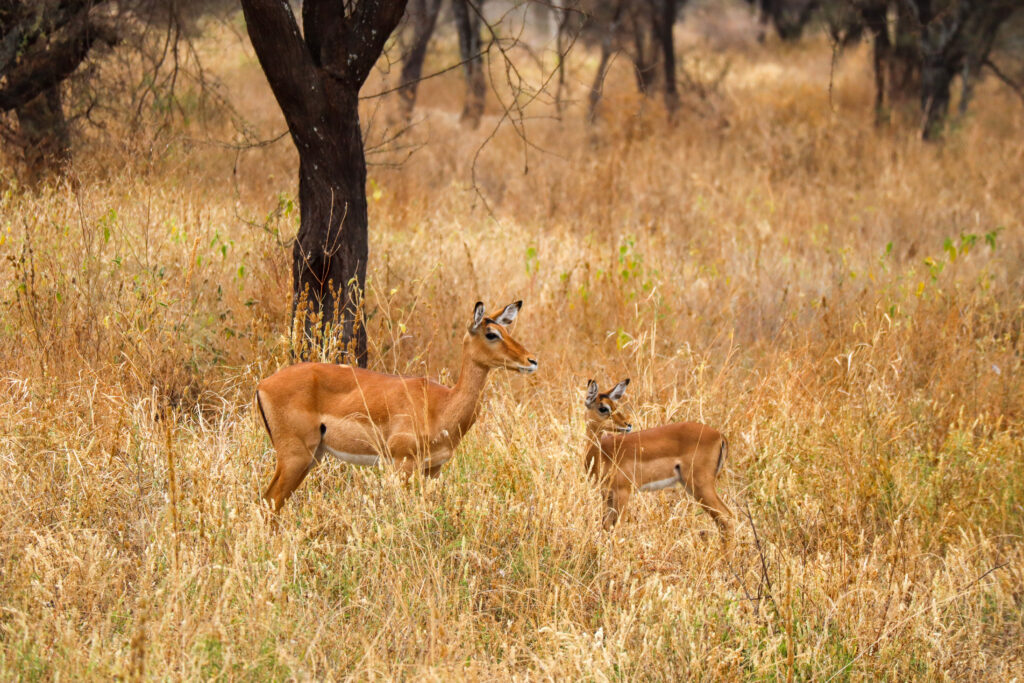
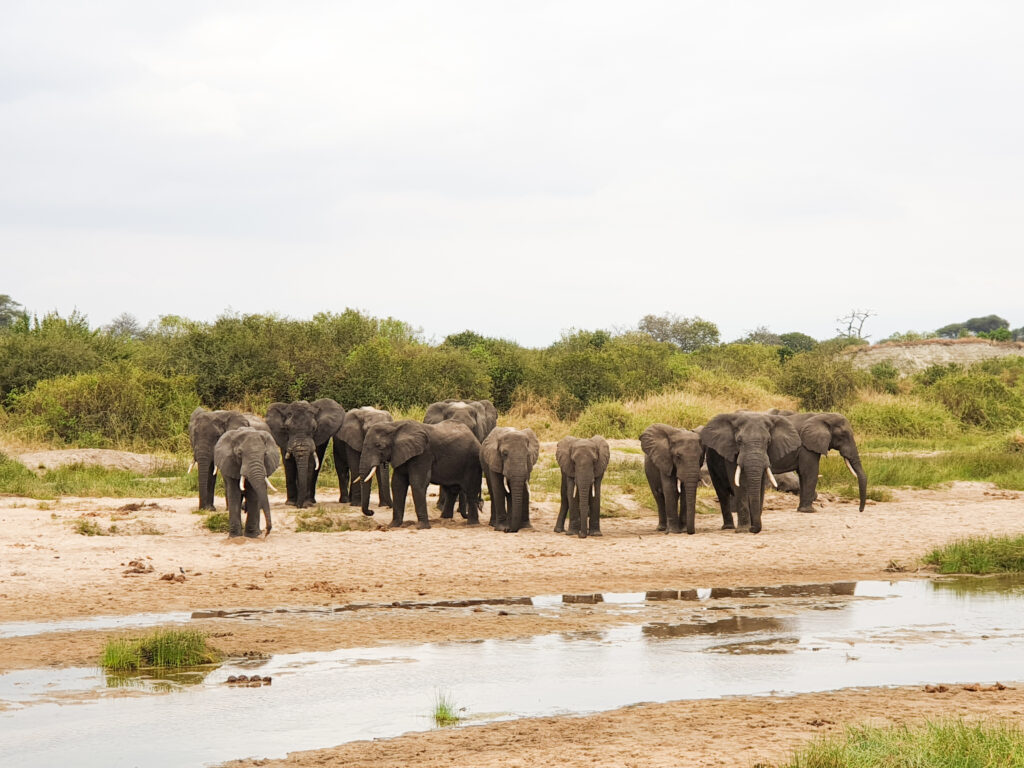

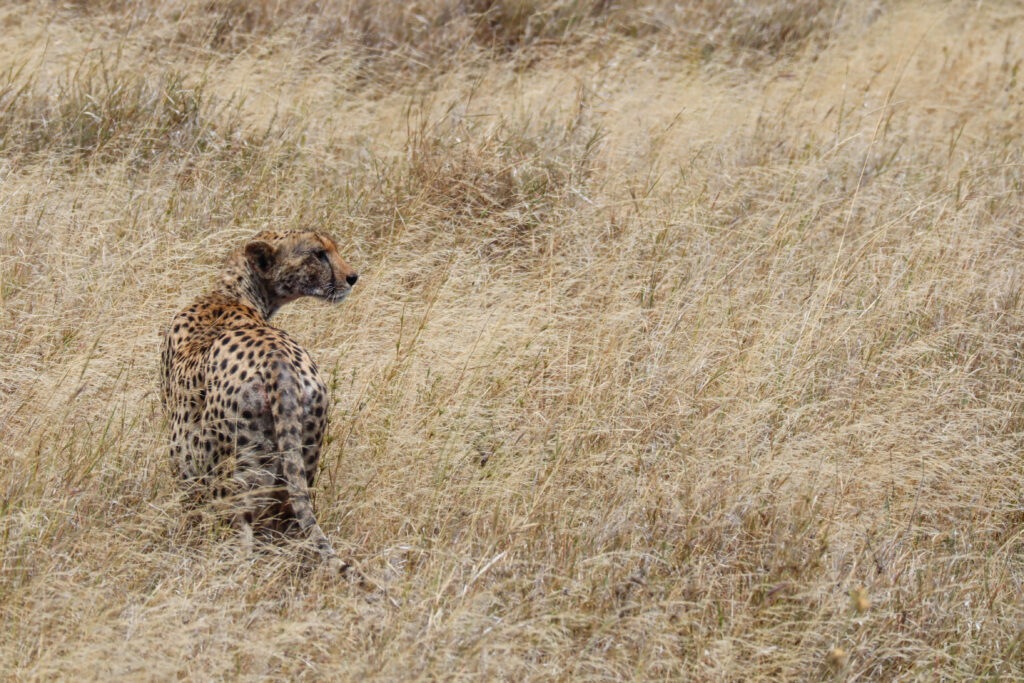

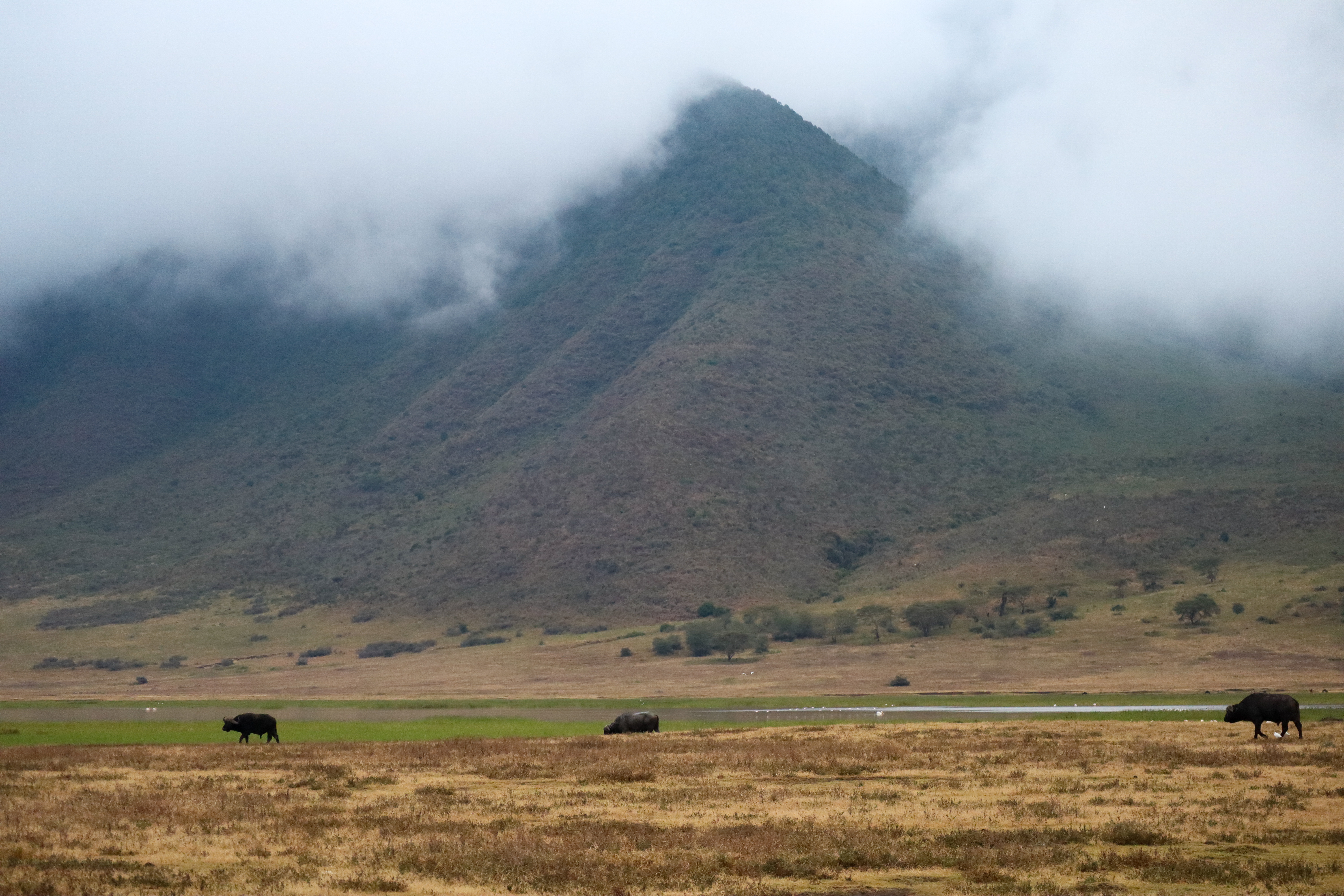

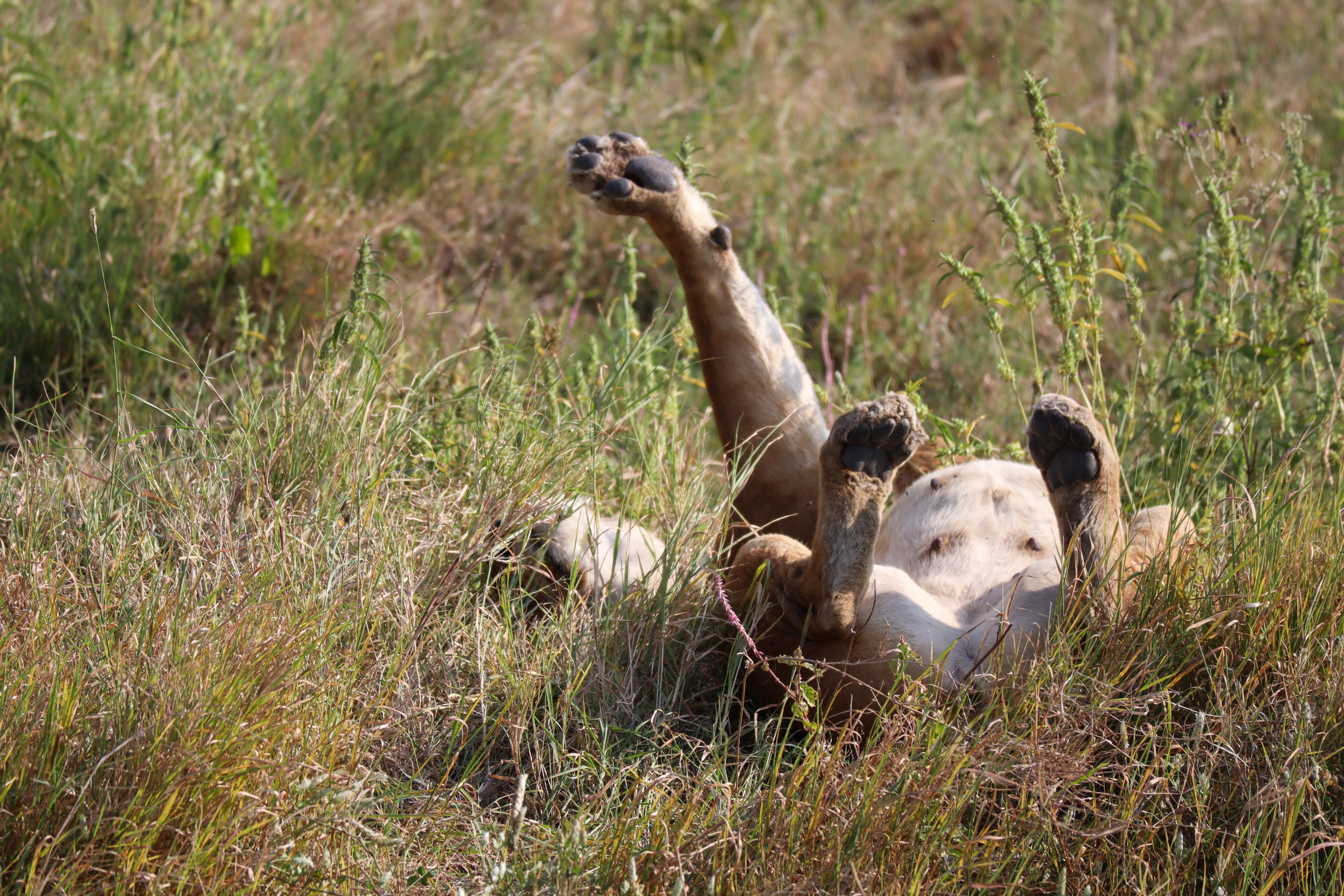


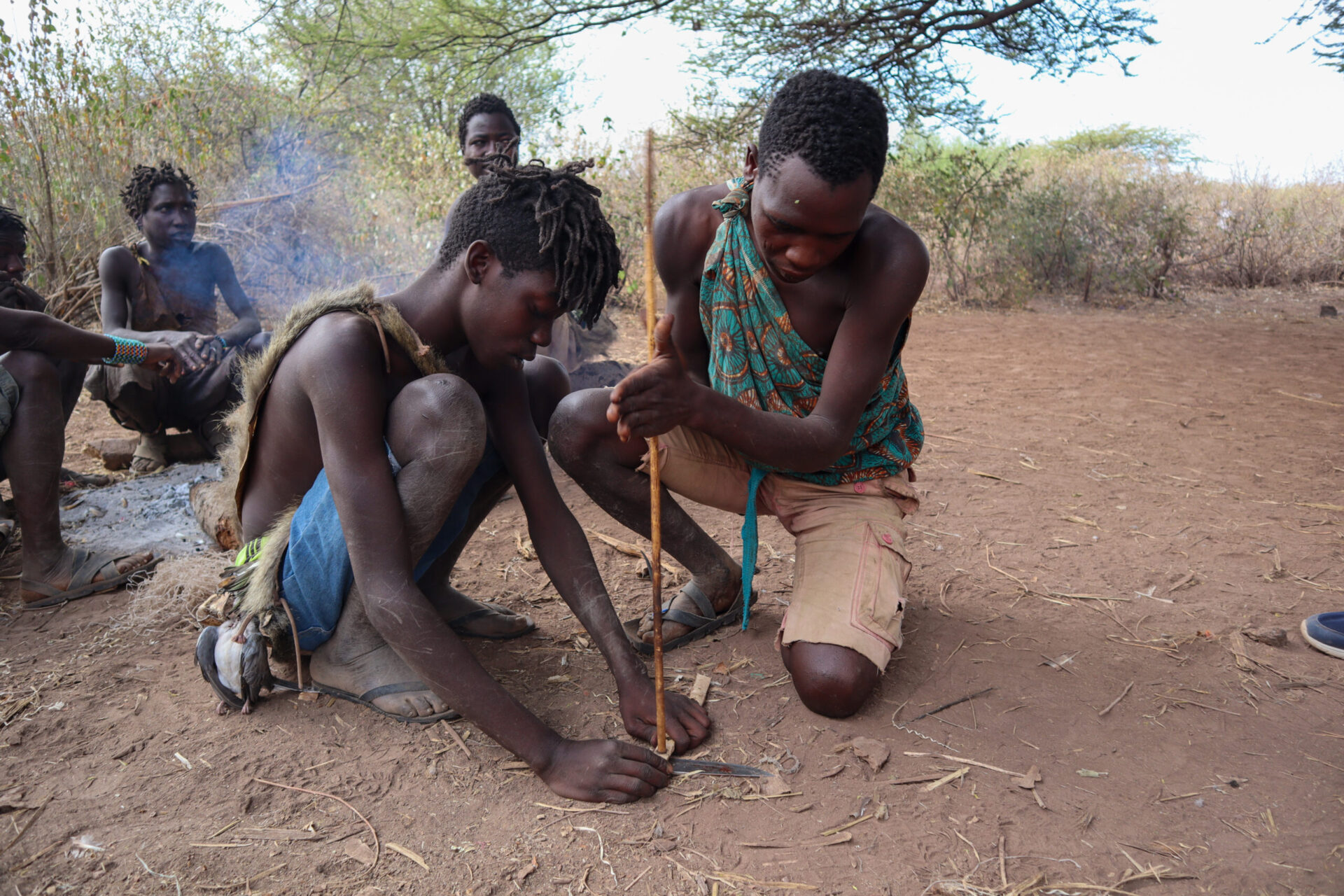
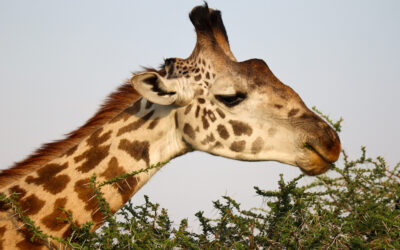
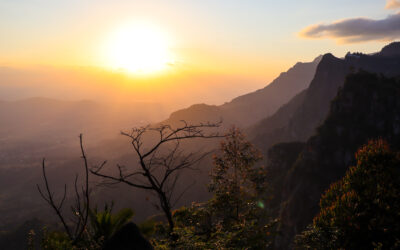
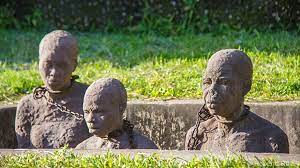

0 Comments